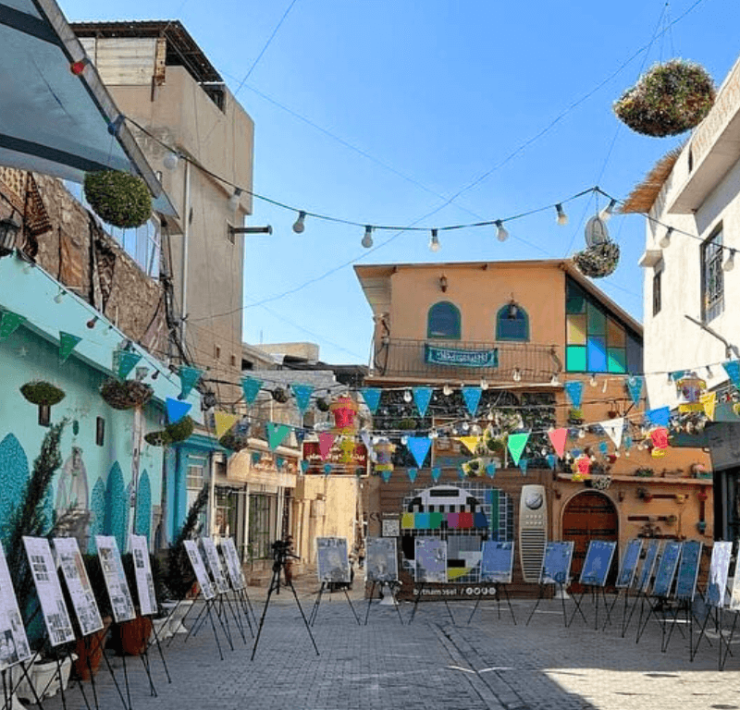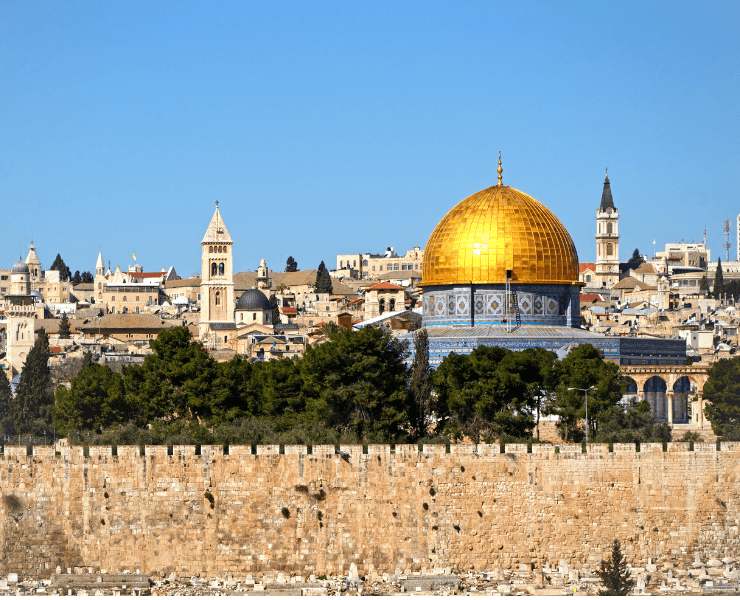Last summer, the Yezidis of northern Iraq marked the third anniversary of the attempted genocide of their people by the so-called Islamic State (ISIL). In August 2014, ISIL rampaged through their villages in Iraqi Kurdistan, killing the men en masse and taking the women and girls as slaves. These women and girls bore unimaginable suffering, facing physical, psychological and sexual abuse and separation from their loved ones.
Some of them have been lucky enough to have been liberated while others managed to escape, some walking miles – terrified and alone – to find help. They now face the struggle of coming to terms with their trauma and trying to reintegrate into a conservative society that can never fully understand what they have been through.
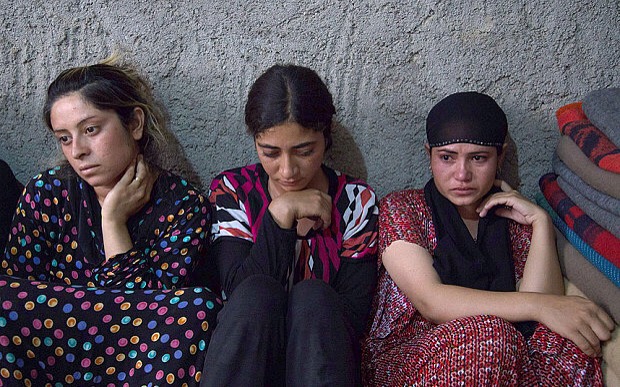 Yezidi women who escaped from captivity share their heartbreaking stories (image: The Telegraph)
Yezidi women who escaped from captivity share their heartbreaking stories (image: The Telegraph)
Last summer, over the anniversary period, British artist Hannah Rose Thomas travelled to Kurdistan with clinical psychologist Sarah Whittaker-Howe, where she met with the women and girls who escaped from captivity. She ran an art project with some of the survivors, helping these women and girls find a way to express their ordeals and begin to rebuild their lives.
The project took place at the Jinda Center in Dohuk (Jinda means rebirth), which serves as a social and psychological safe haven for these women and girls, offering them a place where they are accepted and cared for. The participants came to the center from the surrounding refugee camps where many Yezidis are now living after their villages were destroyed by ISIL.
The project focused on the concept of art as a way of healing, simultaneously offering them both an outlet for their pain and a way of expressing and rebuilding their hopes for the future. Many of the women and girls had never drawn or painted before and were reluctant at first, though they soon overcame this. Hannah, who has previously worked with refugees and victims of conflict in Jordan and Calais, created an environment in which they felt safe and able to express themselves freely and without judgement.
 “They were so glad to have come. It has lifted them out of their sorrow for a brief time to be able to focus on creating something beautiful. It has given them a sense of dignity again and made sure that their stories are not lost. They know they have not been forgotten.”
“They were so glad to have come. It has lifted them out of their sorrow for a brief time to be able to focus on creating something beautiful. It has given them a sense of dignity again and made sure that their stories are not lost. They know they have not been forgotten.”
One young mother called Hanan painted the below image of ISIL separating her from her six-year old daughter. “I can never forget when they took her hands out of my hands,” she told Hannah. She explained that the red for the background symbolizes the blood of the martyrs. Hanan’s husband was executed when ISIL took control of the town of Sinjar three years ago.

The other women painted portraits of themselves in traditional Yezidi white robes, expressing their pride in their cultural heritage. They wanted the world to know about the Yezidi people, what they are going through and the true beauty that their religion represents. This is especially important considering the dehumanising treatment they have experienced in the hands of ISIL.
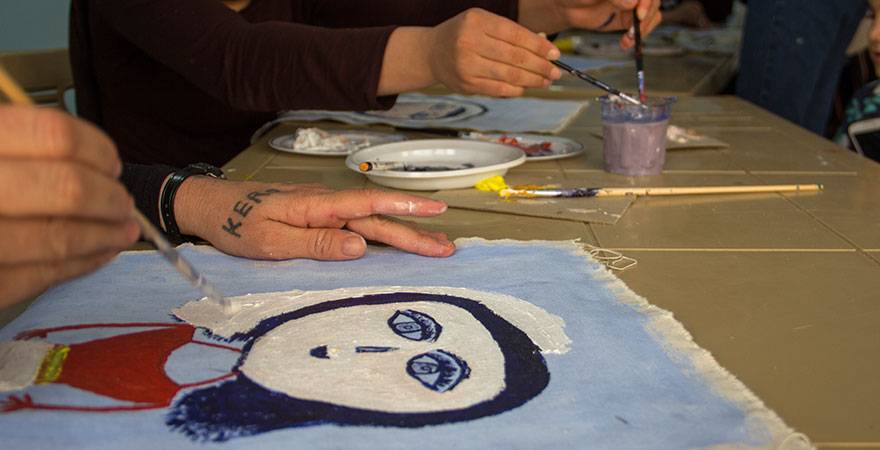
Last year, the Iraqi army pushed to take back control over areas previously held by ISIL. But the liberation of towns and cities like Mosul has given rise to new challenges for this divided and war-torn country. As new areas are liberated, Yezidi women and girls continue to be freed, but they are returning to communities that have been ripped apart by the conflict and are unable to provide them with the basic care and post-trauma therapy they desperately need.
The issues of transitional justice and post-conflict reconciliation are also extremely complicated due to the mass displacement of people and the sectarian divisions that have characterised the country in recent years. Many doubt that the country will remain united, suggesting that a more logical solution would be the division of the country into separate Sunni, Shia and Kurdish states. The government of the northern Kurdistan region is actively seeking this option and is set to hold an independence referendum later in September.
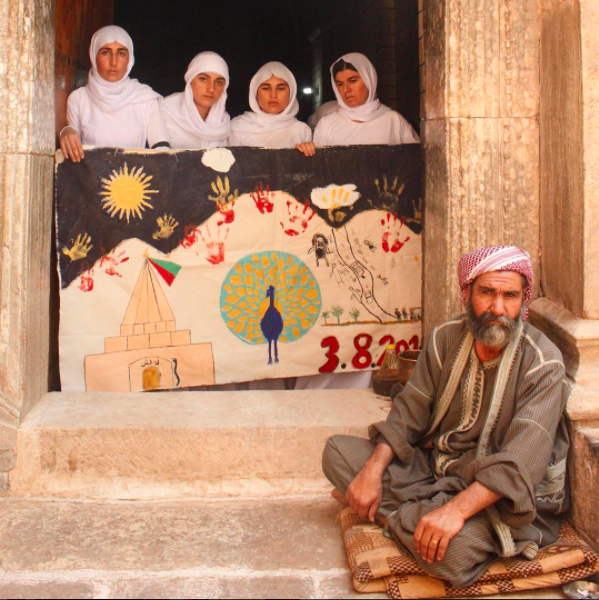 Yezidi women in the town of Lalish, holding a banner they painted to mark the anniversary of the attempted genocide (photo taken by Suzan Fahmi, a member of the Jinda Center team)
Yezidi women in the town of Lalish, holding a banner they painted to mark the anniversary of the attempted genocide (photo taken by Suzan Fahmi, a member of the Jinda Center team)
Hannah Rose Thomas is an ambassador for One Young World and is currently completing a Masters at the Prince’s School of Traditional Arts in London. She has previously organised art projects for Syrian refugees in refugee camps in Jordan through UNHCR and Relief International. She is currently working on a series of portraits of the Yezidi women she worked with, to be exhibited alongside her previous portraits of the refugees with whom she has worked to raise awareness of the issue and to raise money for the Jinda Center.
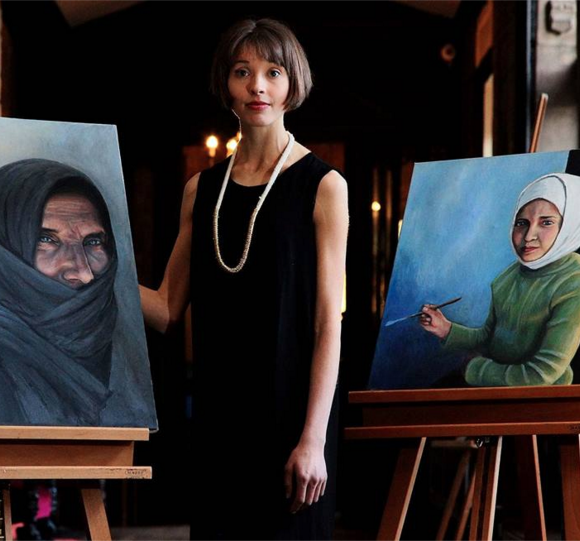 “Working alongside Yezidi women who have escaped Islamic State’s sex trafficking rings and hearing their stories has been one of the most heartrending experiences I have faced.”
“Working alongside Yezidi women who have escaped Islamic State’s sex trafficking rings and hearing their stories has been one of the most heartrending experiences I have faced.”
If you found this interesting, you might also like:
“Driving while female”: Manal al Sharif and the fight for women’s rights in Saudi Arabia



